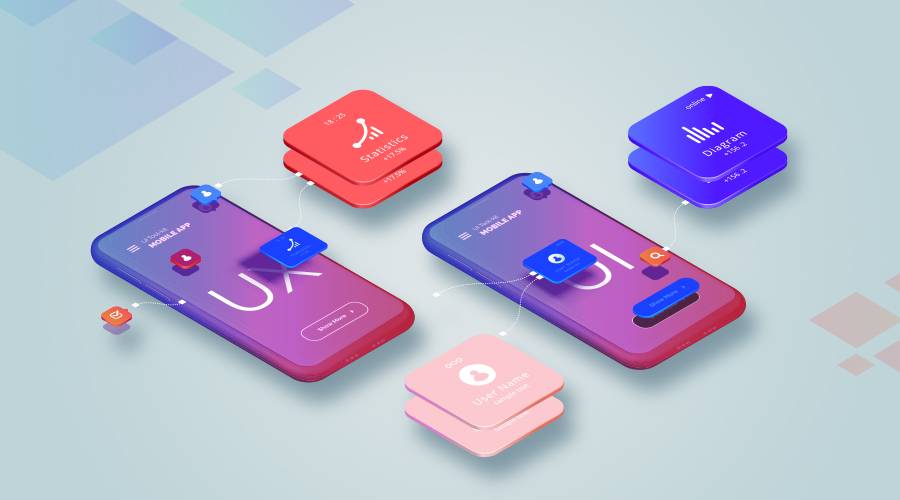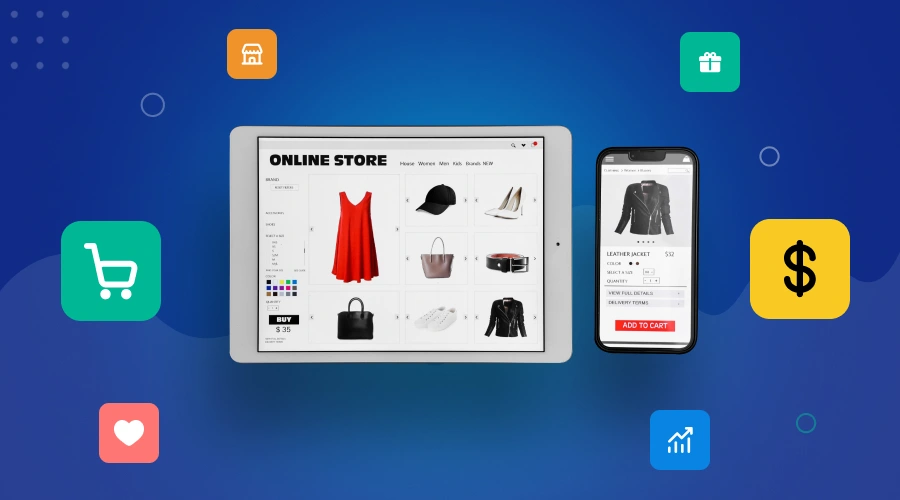There is a mobile app for everything, be it online shopping, games, social media, news, logistics, and more. Since smartphones and the internet have become more accessible, the mobile app development industry is growing at an incredible pace. It is one of the fastest-growing industries. In 2023, the mobile app market was valued at 196.08 billion, and it is expected to expand beyond 1383.65 billion by the end of 2033 (a CAGR of 21.55%).
Millions of apps are there; however, only a few get noticed and become popular. According to a report, 49% of Android applications were uninstalled just one month after installation. The even more shocking fact is that 49% of Android apps were uninstalled within one day. The gaming mobile apps had the highest uninstallation rate within a month after download. What could be the reason behind this? Maybe there are multiple theories behind it, but one obvious fact is poor user design. Today, Knovial will share common UX design hurdles that can hinder the success of your mobile app.
Key Principles of Website User Interface Design
A good user interface needs to be attractive and eye-catching. It should be easy to navigate, consistent with all screen sizes, and have proper online support.
Responsive Design for All Platform Compatibility
Nowadays, when people visit websites using many different devices, having a flexible design is absolutely necessary. It means making a website that changes smoothly to fit the screen sizes of various gadgets like computers, laptops, tablets, and mobile phones. A flexible design ensures that users get the same function and look, no matter what device they are on. Experts at Knovial suggest using components like flexible grids, media queries, etc. to dynamically adjust the layout and content presentation. Thus, it becomes easy to ensure an optimal viewing experience for every user.
Intuitive Navigation to Guide Users Effectively
Navigating a website should be a smooth and intuitive experience. Experts suggest crafting clear and logical navigation structures that guide users through the website. Wise and consistent placement of important navigation elements, such as menus or CTAs, can enhance familiarity and reduce cognitive load. To ensure a seamless user journey, you can employ techniques like breadcrumb navigation, clear labeling, sticky menus, and so on. You should ensure visitors easily get exactly what they need on your website without facing any unnecessary confusion.
Performance Optimization for Speed Enhancement
User patience is a precious factor on the web. The general average time spent on a website is 54 seconds, according to a report by Contentsquare’s 2021 Digital Experience Benchmark. A slow-loading website is not only frustrating but also leads to an increased bounce rate. Maximizing performance is essential for reducing loading times and ensuring fast interactions. Approaches like compressing images, caching browsers, and asynchronously loading scripts help accelerate web pages. Content delivery networks (CDNs) effectively distribute resources across multiple servers worldwide, reducing latency and providing users with a seamless browsing experience. Designers who prioritize performance can create visually appealing websites that also respond quickly to user interactions.
Consistent Branding for a Cohesive Identity
A website is a digital extension of your business. Consistent branding is a key principle in user interface design. Maintain consistency in color schemes, typography, and imagery across the entire website. All these reinforce brand identity and help users build a strong connection with the brand. Website designers should be careful about logo placement, brand colors, and tone of voice to ensure a cohesive brand identity. It does not only strengthen your brand image but also contributes to a polished user interface.
Prioritizing User Feedback for Increased Satisfaction
Effective user feedback helps to keep users informed and identify potential errors. Experts suggest implementing form validation, loading spinners, and success messages in a responsive and informative UI. Make “error messages” clear and concise, and suggest actionable steps to rectify the issue. All these can help prevent user frustration and enhance overall user confidence.
Content Readability and Accessibility for Diverse Audiences
The content you place on the website acts as the core of user interaction. Website designers should wisely choose font size, line spacing, and contrast to increase content readability. On the other hand, the website should be entirely accessible to individuals with diverse abilities. They should include features like alt text for images, keyboard navigation, and proper HTML semantics. Prioritizing readability and accessibility helps create websites that cater to a broad audience.
Scalability and Future-Proofing the Website
A well-designed website should be scalable enough to satisfy business growth requirements and embrace emerging technologies. Build a scalable website architecture that can easily handle increased traffic and content. Designers should stay aware of future trends and advancements to keep the website relevant and functional in the coming future. Adopting these discussed user interface design principles and staying aware of technological developments help craft agile and future-proof websites.
Conclusion
Knovial is one of the most sought-after app development companies in the USA, offering top-grade mobile app development services across the world. You can connect with Knovial to craft an effective UI design that prioritizes a unique mobile UX, eliminates unnecessary complexities, remains user-centric, and prioritizes speed. Apart from this, our experts adhere to industry guidelines and maintain consistency in visual elements to foster a compelling and memorable user experience.







